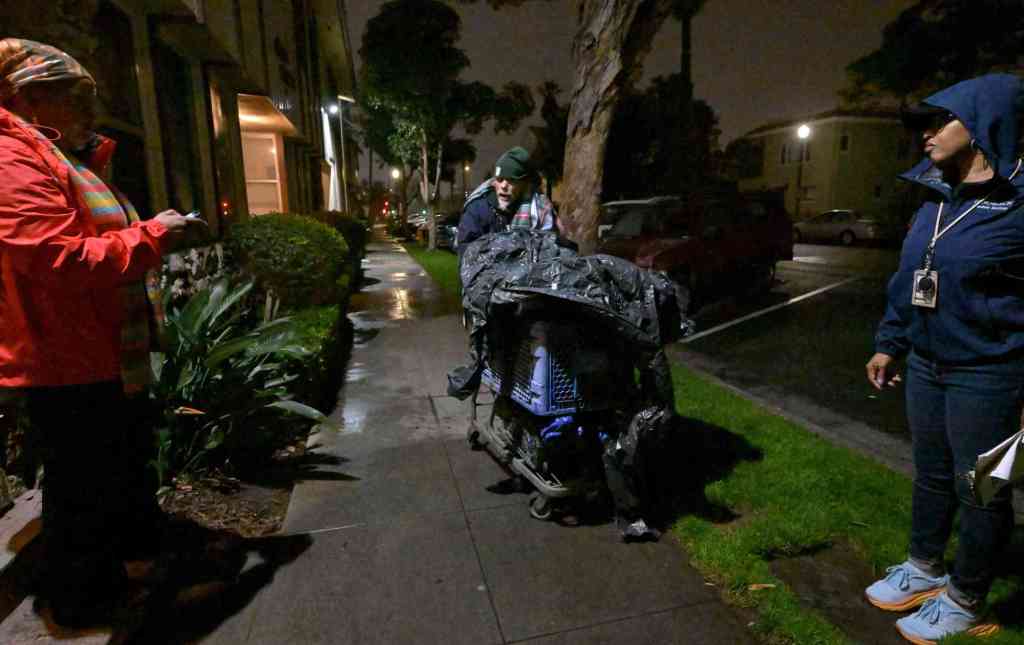New data released Friday, June 28, from the Los Angeles Homeless Services Authority’s tally of the county’s 2024 homeless population showed mixed results for the city of Long Beach and cities in southeastern Los Angeles County.
The data was recorded during LAHSA’s 2024 Greater Los Angeles Homelessness Survey, conducted over three days in January.
LAHSA counted 75,312 homeless people across Los Angeles County, excluding Long Beach, Pasadena and Glendale, which conduct their own counts.
While the overall figure is little changed from the previous year, the data also shows a notable increase in the number of sheltered homeless people, meaning more homeless people were moved into transitional shelter or housing last year compared to past years.
County and city officials expressed cautious optimism Friday, hailing this year’s results as a sign that a countywide effort to bolster homeless services, shelters and affordable housing is beginning to turn things around, but there is still much work to be done.
The city of Long Beach, which has an independent health department and conducts its own annual homelessness survey, offered a similarly optimistic outlook when it released the results of its homelessness survey in April, showing the homeless population had declined for the first time in nearly a decade.
While the city’s 2024 census showed a relatively small decline in homelessness at 2.1 percent (71 people), Long Beach city officials hailed the results as a big step in the right direction, especially when compared to the large increases in homelessness reported during the peak of the COVID-19 pandemic.
Long Beach’s neighboring cities and several towns southeast of Los Angeles also appear to be benefiting from increased efforts to address homelessness across the region.
Los Angeles County’s Service Planning Area 7 (SPA, a geographic division used by the county Public Health Department to develop targeted services based on the specific needs of each community) saw its homeless population decrease by about 9%, or 612 people, in 2024.
SPA 7, which includes Bellflower, Downey, Hawaiian Gardens, Lakewood, Cerritos, East Los Angeles, Signal Hill and Norwalk, has a total homeless population of 5,899 in 2024, down from 6,511 reported last year.
But despite that decline, most cities within that geographic region still reported a slight increase in their homeless populations this year.
Bell, Norwalk and Huntington Park were among the SPA 7 cities that saw increases in homeless populations compared to neighboring cities, but the homeless populations in these areas were still relatively small compared to Los Angeles County and the city as a whole.
There were 198 reported homeless people in Norwalk in 2024, an increase of 97 from the previous year, and in Huntington Park the homeless population increased from 79 in 2023 to 136 this year, according to LAHSA.
However, other cities in SPA7 have reported significant declines in their homeless populations this year.
In Whittier, the homeless population this year totaled 89, down from 219 in 2023.
Downey’s homeless population dropped from 119 people last year to 82 in 2024, Signal Hill dropped from 43 people in 2023 to 34 this year, and Montebello dropped from 225 people last year to 160 people in 2024.
The results for the other seven SPA cities in 2024 are as follows:
Bell Gardens: Increases from 20 in 2023 to 44 in 2024. Bellflower: Increases from 128 in 2023 to 202 in 2024. Cerritos: Increases from 41 in 2023 to 47 in 2024. Commerce: Increases from 41 in 2023 to 48 in 2024. Kudahai: Increases from 16 in 2023 to 21 in 2024. Hawaiian Gardens: Increases from 10 in 2023 to 14 in 2024. Lakewood: Increases from 27 in 2023 to 36 in 2024. La Mirada: Increases from 18 in 2023 to 25 in 2024. Maywood: Increases from 16 in 2024 to 24 in 2024 Southgate: Increases from 112 in 2023 to 135 in 2024.
But while LAHSA’s 2024 homeless count revealed a mix of increases and decreases across the Greater Long Beach and Southeast Los Angeles region, officials said this year’s results show the region is moving in the right direction.
“For the first time in years, we are seeing fewer people sleeping on the streets and more people in shelters,” Los Angeles County Board of Supervisors Chair Janice Hahn said in a social media post Friday.
Hahn represents the county’s 4th District, which includes Torrance, San Pedro, Harbor City, Bellflower, Downey, Long Beach and many other communities in the area.
LAHSA and numerous other local and regional governments have been working in recent years to improve their approach to homelessness.
For example, Los Angeles’ Inside Safe program and Los Angeles County’s Pathway Home program have moved more than 3,500 people from encampments into transitional housing over the past 18 months.
But the county still faces several challenges: a lack of affordable housing across the region, rising costs of living, stagnant wages and a record number of evictions since the end of COVID-era tenant protections last year.
“We’ve been focusing on shelters and making good progress in our efforts to convince people to go into shelters,” Hahn said. “The next step is to build more permanent supportive housing and invest in long-term solutions to this crisis.”

